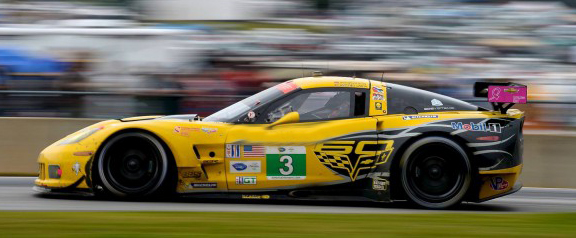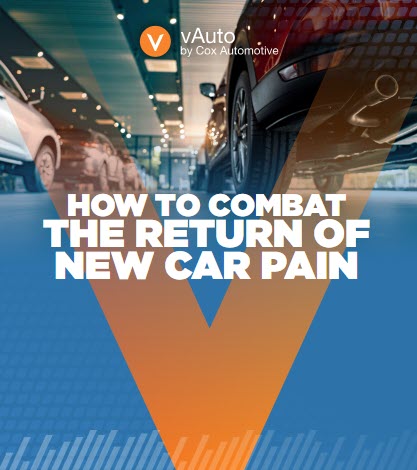Rethinking “The Race To the Bottom” In New and Used Vehicles
If I were still a dealer, here’s how I would address the “race to the bottom” that every dealer complains about these days.
First, I’d recognize the “race” as an inevitable outcome of two converging forces—the vehicle buyer’s desire to get the best deal, using every technique and technology to know the market for a specific car; and the dealer’s desire to acquire more customers and sell more vehicles.
forces—the vehicle buyer’s desire to get the best deal, using every technique and technology to know the market for a specific car; and the dealer’s desire to acquire more customers and sell more vehicles.
Second, I’d regard the “race” as a now-permanent and highly challenging feature of the automotive retail marketplace. Over time, consumers aren’t going to want less transparency in their quest to find the best deals, and dealers aren’t going to stop selling cars. I would come to terms with the reality that easy money in the car business is pretty much gone, and the business itself is quickly shifting from highly to hyper-competitive.
Finally, I’d get hyper-competitive myself. I would do everything in my power to do a better job of selling cars and making money than the guy down the street—with the ultimate goal of stopping the “race” at my showroom doors. I would work long and hard to perfect a retailing model that ensures I get the cars consumers want, and retail them in a more customer-friendly, efficient and margin-minded fashion than the competition.
The problem for many dealers, however, is that the “race to the bottom” remains a frequent target of complaints rather than a call to action.
Some dealers refuse to accept the new market realities, believing in a version of the car business that has arguably faded away. Other dealers are more aware of the “race” and its symptoms, but they haven’t yet figured out the operational strategy and processes that help them acquire more customers and sell more new/used vehicles in a more profit-healthy manner.
An even smaller group of dealers seem to have crafted a recipe for success. In fact, they thrive in this new retail environment, selling more cars for more money as they’ve embraced new terms of engagement.
For them, there is no “race to the bottom.” That’s yesterday’s news. Rather, they understand success goes to the dealer who wins the “race to the consumer.” This “race” entails offering the right cars at the right prices, and delivering the right in-dealership experience to earn a fair profit and seed long-term loyalty.
Not all of these dealers approach the “race to the consumer” in exactly the same way. However, their business plans feature four pillars that are fundamental to winning the “race:”
1. Proper pricing. These dealers don’t expect to make $3,000 to $4,000 front-end gross profits on new/used vehicles unless the market validates such expectations. The challenge then becomes understanding how to assess and act upon market supply, demand and pricing data to determine each car’s pricing and profit “sweet spot” in the market—from the day it’s purchased to the day it sells. Proper pricing doesn’t mean pricing vehicles at the “bottom,” it means pricing/repricing vehicles to fit what the consumer views as the “market” for the vehicle. To this end, dealers have increasingly aligned their pricing decisions to Vehicle Details Page (VDP) data, given it offers a clear, up-to-the-minute read on each vehicle’s current pricing appeal to potential buyers.
2. Proper promotion. Every new or used vehicle deserves the best shot to attract a potential buyer—an indisputable page from Car Retailing 101. But, in today’s environment, consumers are looking to validate more than just “the car” and “the price.” They want to validate you as a place where they can buy with confidence and, for some, even a degree of pride. This is now an important third leg of online merchandising that remains a challenge for dealers who find it difficult to arm every vehicle with its own compelling descriptions and photos, much less place the vehicle to maximize its visibility to potential buyers.
3. Proper purchasing. For my money, this pillar is “ground zero” for winning today’s “race to the consumer.” In new or used vehicles, it’s imperative that dealers do all they can to purchase the vehicles consumers want, and do so for the least investment. I would submit that dealers are more astute about the proper purchasing of used vehicles than new vehicles. The chief reason? It’s currently easier to tell what consumers want and to readily see (and account for) what’s on the ground in the market. Over time, dealers will gain similar competitive insights into the new vehicle market that helps them purchase and retail more in-demand vehicles at a faster pace—essentially a new vehicle inventory profile that drives operational velocity and vitality.
4. Proper processes. Successful dealers today have worked hard to transform their dealership cultures and reputations to help them win the “race to the consumer.” They take pains to ensure in-store sales processes consistently reflect the market-based pricing transparency and customer experience they promote online. In the end, these dealers find that customers will pay more for a superior experience—and they’ll tell their friends.
Perhaps the best news for dealers is that the “race to the consumer” is a relatively new contest. It’s still the same racetrack, but the conditions and course are different—which means the most adaptable dealers are the first to find the winner’s circle.
The post Rethinking “The Race To the Bottom” In New and Used Vehicles appeared first on Dale Pollak.








